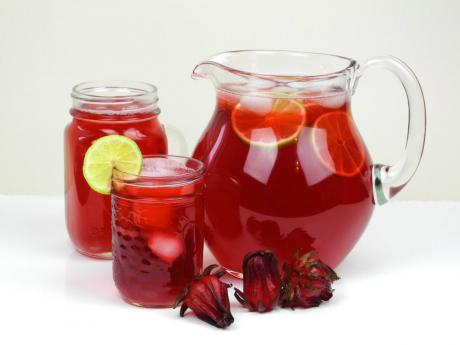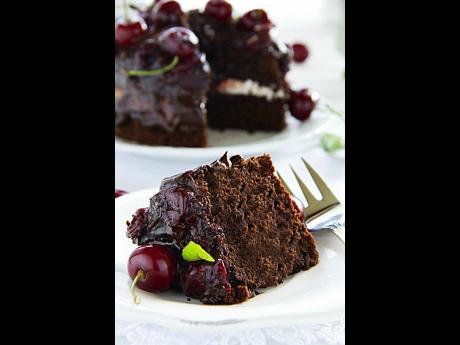Alfred Dawes | The Christmas War
Sigh! Christmas is coming and with it all the parties, dinners and socials where food is the bond that brings us all together. But we are on our diets/lifestyle changes that have been working fairly well. We are losing weight, or at the least not gaining anymore.
We survived Easter and mango season, but this battle is different. This is not just about buying a small bun or less mangoes than before we made our commitment. This is D-Day.
If we survive Christmas then vision 2020 will be well in sight. Like Sun Tzu said in the ‘Art of War’, we must plan our victory long before the battle begins.
So let us strategise how to attack our plates this Christmas.
STEP 1 – KNOW YOUR ENEMY
Before you enter the battlefield, you must know who you are going up against. There will be lots of curried goat, ham, chicken and beef.
Goat is one of the best meats to have, as it is an excellent source of lean protein and very little fat. However, you have to skimp on the curry gravy, as this and other sauces are hidden sources of calories that add up over the course of the meal.
Ham without the fat is another good source of lean protein. However, if you are hypertensive, you have to be careful and limit your portions, as this cured meat can have a high sodium content.
Red meat has got a bad rap over the years because of its high content of saturated fat. However, recent studies are showing that much of these fears are overblown. You can enjoy red meat without a fear of increased risk of obesity, cancer and heart disease. Just watch your portion size and go easy on the gravy.
STEP 2 – PLAN YOUR ATTACK
Even when you are surrounded by food, a good general knows he can’t win by attacking every formation. Choose your battles wisely. If you are a meat person and want as much as possible, compensate by taking on less carbohydrates. Rice, mashed potatoes, potato salad, pasta and bread are all simple carbohydrates that can contribute a significant number of calories to your meal. Instead of filling your plates with carbs, go for the meat and veg option. You will eat less calories and feel full for longer.
Egg nog and sorrel can add hundreds of calories to a meal without you even realising it. You can still enjoy these staples but fill your glass with ice or simply drink less.
Christmas cake can add anywhere from 320 to a whopping 700 calories per slice, depending on the recipe. That alone can wipe out any gains you have made scrimping on the main course.
My simple advice: when confronted with a delicious slice of cake begging you for seconds, wave the white napkin and retreat!
STEP 3 – USE YOUR ALLIES
It is easy to say stop eating when you’re full. But it is a different story when the sights and smells are assaulting your senses. The key then is to feel full from foods that are not calorie dense. Food substitutions are an effective way to enjoy a meal and not pile on the calories.
Drinking water instead of juices and sodas can impact your total caloric intake significantly. Substituting vegetables for rice also results in significant savings in calories consumed. Your choice of salad dressing, gravy and sauces can result in vast differences in calories.
STEP 4 – DEPLOY WISELY
As so many defeated leaders can tell you, never fight a war on multiple fronts. If you have a confirmed engagement where your resolve will be tested, don’t eat as usual. In fact, this is the perfect training ground for intermittent fasting (IF). Intermittent fasting involves avoiding caloric intake for a set time period followed by a window period of eating as usual, for example, 16 hours fasting; eight hours allowed eating.
Proponents of intermittent fasting claim it has a metabolic advantage that results in your metabolism speeding up and burning more fat than other diets. However, the only evidence in support of IF is that because the window of eating is small, you eat less calories per day. Skipping breakfast and lunch will save you on a significant portion of your daily caloric intake.
You can employ this strategy to keep your daily calorie count within regular limits while enjoying your planned Christmas meal.
STEP 5 – LOSE SOME WIN MORE
No conqueror has ever lost a battle. They are successful because they learn from their defeats and win more than they lose. They employ consistency. You will not do good at every meal and party. But if you are consistent with employing your diet plan, then it will pay off in the long run.
Do not beat up on yourself if you ate badly. Just promise yourself to do better at the next opportunity. And more important, do it. If you eat better more often than you eat badly this season, that is a small victory.
Keep your exercise programme going, which will help you to offset the calories consumed.
When all is said and done, for most of us it boils down to ‘calories in calories out’.
If you are morbidly obese or have hormonal or medical reasons why you have weight issues, it is more difficult for you. But remember, the best war stories are about the triumph of the underdog.
Dr Alfred Dawes is a general, laparoscopic and weight loss surgeon; Fellow of the American College of Surgeons; former senior medical officer of the Savanna-la-Mar Public General Hospital; former president of the Jamaica Medical Doctors Association. @dr_aldawes. Email feedback to columns@gleanerjm.com and info@islandlaparoscopy.com.







